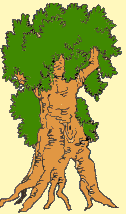JATROPHA CURCAS
JATROPHA CURCAS
JATROPHA CURCAS
French: Pourghere
WOLOF: Tabanani, BAMBARA: Bagani, DIOLA: Delaigou, PEUL: Kidi GOUN: Gbaguilikpotin wéwé.
It is part of the class of Magnoliopsida, of the order of Euphorbiales, of the family of Euphorbiaceae, genus Jatropha.
It is a shrub that can range from 2 to 6m in height, with a straight trunk, alternate, pentagonal leaves, cordate at the base, and acuminate at the top. Flowers appear with the first leaves or just before leafing. The fruit, an ovoid capsule, contains three black seeds when ripe.
Jatropha, native to Brazil, was introduced in the 16th century to the Cape Verde Islands by Portuguese navigators. It is now found in all tropical regions. Here in Senegal, it is cultivated in rural areas where it serves as living hedges. This plant is very poisonous so its use requires a lot of caution.
Jatropha seed provides oil for industrial use that can be used as a biofuel.
It is a plant that can produce up to 1900 liters of diesel per hectare. It is easy to grow and grows in arid soil. Its lifespan is approximately forty years.
The Pourghère protects the soils from erosion and fertilizes them with its humus.
The decoction of the plundered seeds gives a yellow oil which can be used for lighting, it burns without smoke. The latex is antiseptic. The fresh leaves crushed in water are very effective against hemorrhoidal bleeding and prolonged periods.
Breasts soaked in an infusion of jatropha leaves, increase lactation.
The poultice of the leaves is said to treat rheumatism, boils, and leprosy.
Add a comment






















